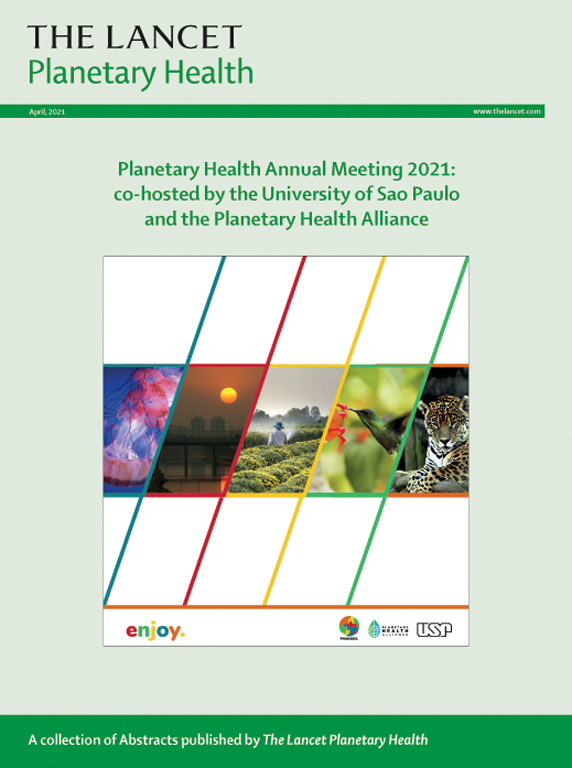1998-2022年美国亚微米颗粒物(PM1)浓度估算:利用全国PM2·5成分数据测量PM1
IF 21.6
1区 医学
Q1 ENVIRONMENTAL SCIENCES
引用次数: 0
摘要
背景:细颗粒物(PM2·5)每单位质量浓度暴露的过量健康风险估计值仍然存在较大的差异,这可能是由于气溶胶大小和成分的变化。亚微米颗粒物(PM1)最近在中国的研究中被报道比PM2·5对健康的影响更大,但由于美国缺乏长期的PM1数据,尽管有大量的队列研究,但这类研究仍被禁止。本研究旨在填补这一数据空白,并估计1998-2022年美国各地的PM1浓度。方法:通过对PM2·5化学成分的混合估计,综合了卫星反演、空气质量模拟和地面监测的信息,我们估算了1998-2022年25年间美国连续地区每两周1平方公里分辨率的无间隙环境PM1浓度及其不确定性。直径小于1 μm的PM2·5组分的质量分数受到4个主要组分的观测结果和对其他组分已建立的科学认识的限制。发现spm1浓度在美国东部、主要城市和工业区以及受野火影响的地区呈现明显的空间差异;低浓度在干旱的西部地区普遍存在。2022年人口加权平均(PWM) PM1 (6.1 μg/m3)的主要成分为有机质(47%)、硫酸盐(22%)、硝酸盐(12%)、黑碳(8%)和铵(7%)。两周PM1估计值与独立的地面PM1测量值高度一致(斜率= 0.96,R2= 0.78)。在超过800万陆地像元的25年间,98%的数据点的年平均PM1估计的1 σ不确定性小于20%,而美国相邻地区0.3%的人口与森林火灾造成的不确定性大于30%。1998-2022年间,PWM PM1以每年- 0.23 μg/m3的速率显著下降(p< 0.0001),占PWM pmm2·5总体减少量的86%;PWM PM1/PM2·5比值同时下降(- 0.0013 /年,0.00001 /年)。PM1在PM2·5减少中的主导地位和PM1/PM2·5比值的下降反映了在25年的研究期间,PM1与化石燃料和其他燃烧源及其对空气质量法规的响应密切相关。PM2·5的逐渐粗化要求越来越迫切地分别评估PM1与PM2·5对健康的影响,并得到PM1估计值的质量支持。未来的颗粒物监测规划、健康研究和监管审议应考虑PM1和PM2·5。国家环境健康科学研究所,国家卫生研究院。本文章由计算机程序翻译,如有差异,请以英文原文为准。
Estimates of submicron particulate matter (PM1) concentrations for 1998–2022 across the contiguous USA: leveraging measurements of PM1 with nationwide PM2·5 component data
Background
Excess health risk estimates of exposure per unit mass concentration of fine particulate matter (PM2·5) still exhibit a wide range, potentially due to variations in aerosol size and composition. Submicron particulate matter (PM1) was recently reported to exert stronger health impacts than PM2·5 from studies in China, but an absence of long-term PM1 data in the USA has prohibited such investigations despite a wealth of cohorts. This study aims to fill this data gap and estimate PM1 concentrations over 1998–2022 across the USA.
Methods
We estimated biweekly gapless ambient PM1 concentrations and their uncertainties at 1 km2 resolution across the contiguous USA over the 25-year period of 1998–2022, from hybrid estimates of PM2·5 chemical composition that merged information from satellite retrievals, air quality modelling, and ground-based monitoring. The mass fractions of PM2·5 components with diameters below 1 μm were constrained by observations for four major components and from established scientific understanding for the other components.
Findings
PM1 concentrations exhibited pronounced spatial variation across the contiguous USA with enhancements observed in the east, major urban and industrial areas, and areas affected by wildfires; low concentrations are prevalent over the arid west. The main components of population-weighted mean (PWM) PM1 in 2022 (6·1 μg/m3) were organic matter (47%), sulphate (22%), nitrate (12%), black carbon (8%), and ammonium (7%). The biweekly PM1 estimates were highly consistent with independent ground-based PM1 measurements (slope=0·96, R2=0·78). The estimated 1-σ uncertainties of annual mean PM1 for the 25 years over more than 8 million land pixels were less than 20% for 98% of data points, while 0·3% of the population of the contiguous USA was associated with uncertainties of more than 30% due to wildfires. The PWM PM1 decreased significantly (p<0·0001) at a rate of –0·23 μg/m3 per year during 1998–2022, accounting for 86% of the overall reduction of PWM PM2·5; the PWM PM1/PM2·5 ratio experienced simultaneous decrease (–0·0013 per year, p<0·0001).
Interpretation
The dominance of PM1 in PM2·5 reduction and the decreasing PM1/PM2·5 ratio reflect the strong association of PM1 with fossil fuel and other combustion sources and their responses to air quality regulations during the 25-year study period. The gradual coarsening of PM2·5 calls for increasing urgency to separately assess health impacts of PM1 versus PM2·5, as supported by the quality of the derived PM1 estimates. Future particulate matter monitoring programmes, health studies, and regulatory deliberations should consider PM1 in addition to PM2·5.
Funding
National Institute of Environmental Health Sciences, National Institutes of Health.
求助全文
通过发布文献求助,成功后即可免费获取论文全文。
去求助
来源期刊

Lancet Planetary Health
Multiple-
CiteScore
28.40
自引率
2.30%
发文量
272
审稿时长
8 weeks
期刊介绍:
The Lancet Planetary Health is a gold Open Access journal dedicated to investigating and addressing the multifaceted determinants of healthy human civilizations and their impact on natural systems. Positioned as a key player in sustainable development, the journal covers a broad, interdisciplinary scope, encompassing areas such as poverty, nutrition, gender equity, water and sanitation, energy, economic growth, industrialization, inequality, urbanization, human consumption and production, climate change, ocean health, land use, peace, and justice.
With a commitment to publishing high-quality research, comment, and correspondence, it aims to be the leading journal for sustainable development in the face of unprecedented dangers and threats.
 求助内容:
求助内容: 应助结果提醒方式:
应助结果提醒方式:


